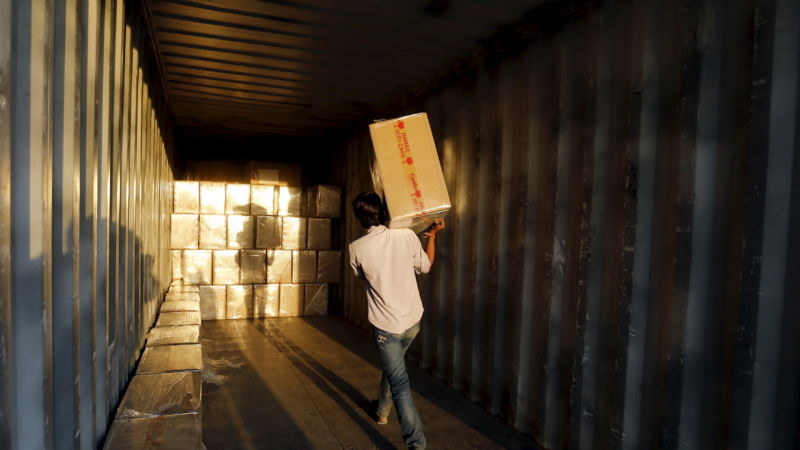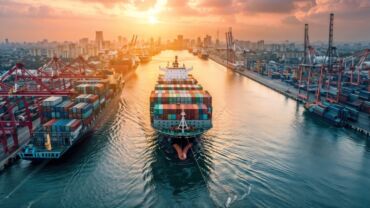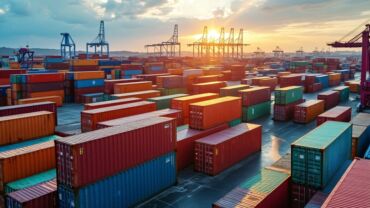The new and impactful Regional Comprehensive Economic Partnership will create new trade opportunities among Asian countries and accelerate the region’s economic recovery.
The world’s largest free trade agreement (FTA), the Regional Comprehensive Economic Partnership (RCEP), went into effect January 1; and, as far as being a transformative agreement, the RCEP is a very big deal.
The RCEP will create new trade opportunities among Asian countries and accelerate the region’s economic recovery, says Zoe Martinez, a Thomson Reuters global trade leader who is focused on Asia & emerging markets. For example, the agreement will eliminate tariffs on more than 90% of goods over the next 10 to 15 years and introduce rules on investment and intellectual property to promote free trade.
The agreement covers about 30% of the world’s population, the global gross domestic product (GDP), and worldwide trade. It’s larger than the United States-Mexico-Canada Agreement, the European Economic Area, and the Comprehensive and Progressive Agreement for Trans-Pacific Partnership (with which the RCEP overlaps.)
Japan is likely to be a big winner, because the RCEP will give the country a free trade agreement with China and South Korea for the first time. Japanese companies that produce electrical good and electronic products, machinery, automobile components, and some agricultural and food products will enjoy significant tariff concessions when they export to China, Martinez says. The Japanese government expects the accord to increase its own GDP by 2.7% and create approximately 570,000 jobs.
The RCEP also will strengthen China’s economic leadership in the region; and its exports to Japan — including machinery, electronic equipment, textiles, and clothing — will benefit from low or no tariffs.
Register now to join us for a webinar on the impact of sanctions and export controls on global supply chains
Countries participating in this the RCEP’s new free trade zone are China, Japan, South Korea, Australia, New Zealand, and the 10 nations in the Association of Southeast Asian Nations — Brunei, Cambodia, Indonesia, Laos, Malaysia, Myanmar, the Philippines, Singapore, Thailand, and Vietnam. Also, Hong Kong has applied for membership, and there is an effort underway to persuade India to join.
Bolstering the region
“It’s a trade deal that sets up trade in Asia, for Asia,” says Deborah Elms, executive director of the Asian Trade Centre in Singapore. “We’ve had a lot of trade in Asia, of course… [but] we don’t have as much final production that ends up in Asia,” Elms explains. “One of the reasons we don’t have that is because trade in the region, especially for finished goods, is too difficult, too expensive — tariffs in place, non-tariff challenges, etc. — so you have less trade in the region than you should have.”
She admits that RCEP is not a perfect agreement, but adds that it makes it more likely that firms will create Asia-based supply chains for Asian trade. “As the agreement comes into force and becomes more meaningful for firms, then it will accelerate over time,” Elms says.
Many companies have implemented a China-plus-one supply chain policy, meaning they are manufacturing in China and other countries to create stronger, more flexible supply chains, says Thomson Reuters’ Martinez, adding that if their “plus-one” countries are RCEP members, they also can benefit from the FTA.
In addition to delivering significant duty savings, Martinez notes, the RCEP will standardize trade in a region previously reliant on complex and varied FTAs, which can be hard to navigate, require significant resources to manage, and feature different rules of origin and certification procedures.
The RCEP, on the other hand, replaces multiple FTAs with a single agreement and provides common rules of origin across all member states, a single Certificate of Origin, faster clearance of goods through Customs, and product-specific rules that will be synchronized with the World Customs Organization Harmonized System (HS).
Overcoming obstacles
While the RCEP offers significant benefits, Martinez notes, there also are disadvantages:
-
-
- Some RCEP duty rates will reduce gradually over time — perhaps as long as 20 years — so existing FTAs may have better rates in the short term.
- Not all RCEP countries are ready for self-certification; it may take several years to fully implement.
- Additional requirements for rules of origin exist in some HS codes.
- China and South Korea are especially assertive about initiating audits, so it’s important for companies to be consistently compliant. This requires careful maintenance of FTA documentation as evidence for audit — particularly where self-certification is used.
-
Unfortunately, the Customs tariff and FTA-related data that is needed to analyze supply chain scenarios and find the best options often is not housed in companies’ enterprise resource planning software and is managed manually in spreadsheets. With an automated supply chain software platform, on the other hand, corporate trade specialists can evaluate the RCEP’s savings potential, ensure they are compliant with the latest rules and regulations everywhere they operate, and make well-informed operational decisions.
To get started, Martinez recommends a four-step process:
-
-
- For duty optimization, map your supply chain to understand your trading scenario. Where do you currently manufacture? Where do you ship to? What are the products? What is their HS classification?
- To assess which FTA will deliver the maximum benefits most efficiently, determine which FTAs are available, the savings each provides, and whether you can optimize their use.
- Next, confirm which of your sourced raw materials and manufactured processes qualify for FTAs. This entails establishing a process to manage FTAs, connect with suppliers for FTA status and Certificates of Origin, verify that your products satisfy the rules of origin, and consider automation to maximize benefits across all FTAs.
- To optimize landed costs, deploy an effective duty-optimization strategy that capitalizes on FTA benefits and adapts as they change. An automated process could enable strategic sourcing, eliminate repetitive manual work, minimize compliance risk, maximize FTA use, and increase cost competitiveness.
-
Without automation, the process would be incredibly manual, requiring more time and being prone to errors.







